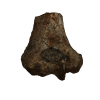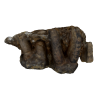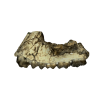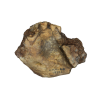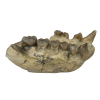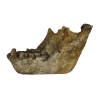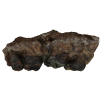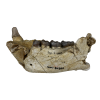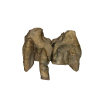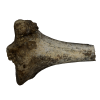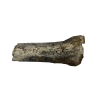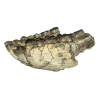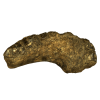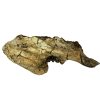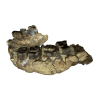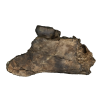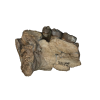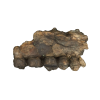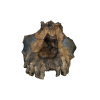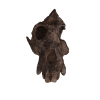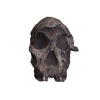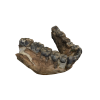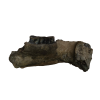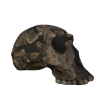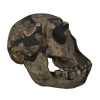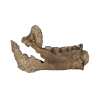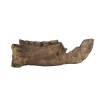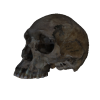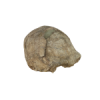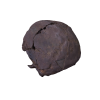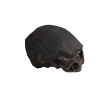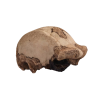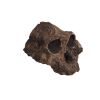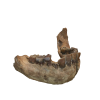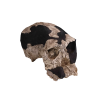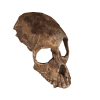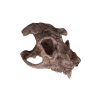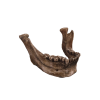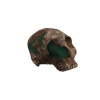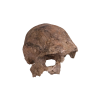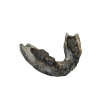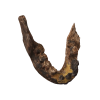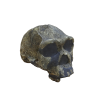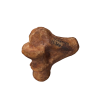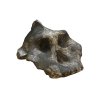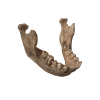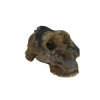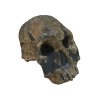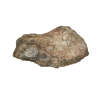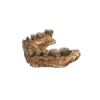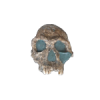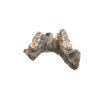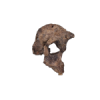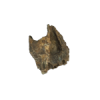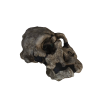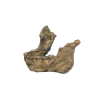This impressive skull was discovered in 1983 by an Austrian couple, Gerlinde Darnhofer and her husband Till. While they were walking along the beach, they noticed many fossils eroding out of the exposures along the shoreline. On noticing the back of a human skull, they dug into the sand and found this cranium buried below the surface. They delivered this skull to Richard Leakey, then director of the National Museums of Kenya. In his office they pulled it out of the bottom of a basket full of fossils and explained where they had found it. The location of its discovery has been reconstructed from photographs they took of the site when they collected it. The age of the specimen is considered to be about 300,000 years although a more secure date is currently being researched. This specimen is not yet a fully modern Homo sapiens, as can be seen by the lack of forehead. It had a large brain and the skull is very robust and very dark black in colour due to the manganese rich minerals in the sediments in which it was preserved. It is yet unclear which species this specimen should be attributed to, with some researchers placing it within Homo helmei (the name given to an archaic form of H. sapiens found in South Africa) and others in H. heidelbergensis, which is considered to be the last common ancestor between modern humans and Neanderthals. This is because, not much is understood about the diversity of the African hominins from this time period as little research has been carried out to date in the rare African deposits of this age. However, a major new research project is now underway in the Turkana Basin, and this should provide exciting insight into this important stage of human evolution.
|
Homo heidelbergensis
KNMES 11693 Age approx. 0.30 Million Years
Digital Capture: Photogrammetry Eliye Springs 0 Comments Order: Primates Family: Hominidae Tribe: Hominini Genus: Homo Species: heidelbergensis Element: Cranium Locality: Eliye Springs, West Turkana Year of Discovery: 1983 Other Fossils to View |



